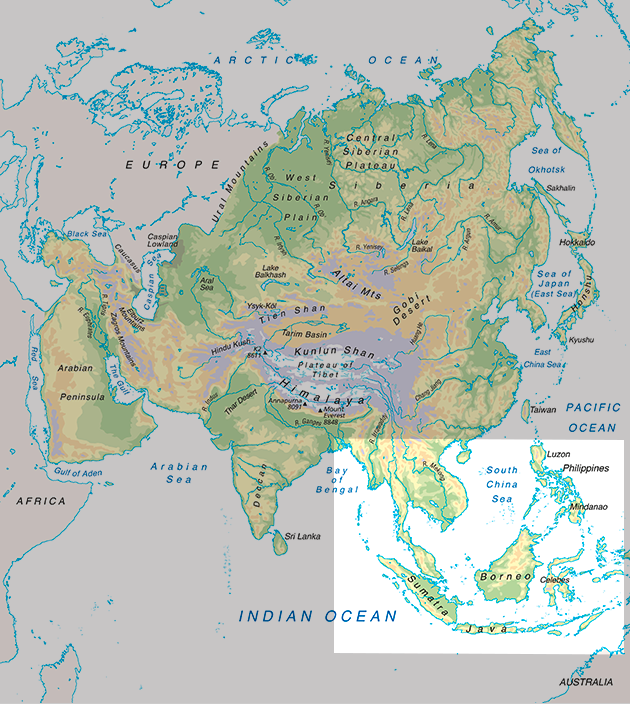
Southeast Asia
Southeast Asia is physically divided into two parts. The mainland section consists largely of two very prominent peninsulas: Indo-China, covering Vietnam, Laos and Cambodia; and the Malay Peninsula, occupied by Malaysia and by the southerly extensions of Thailand and Myanmar (Burma). Almost all of the rest of the region consists of a string of archipelagos to the south and east which include the large islands of Java, Sumatra and Borneo. These archipelagos stretch from west to east for almost 6000 kilometres. The Philippine Islands make up the most northern group of islands in the region. The region lies on the intersection of geological plates, and is one of the most volcanically active regions in the world.
The climate in Southeast Asia is mainly tropical, hot and humid all year round with monsoonal rainfall.
The region is densely populated, the people are ethnically diverse and of mixed religion. Islam is widely practised by about 40% of the population.
The economy is heavily dependent on agriculture, however, manufacturing and service industries are fast becoming an important part of the economy. Tourism in particular is a key industry for the economic development of Southeast Asia.